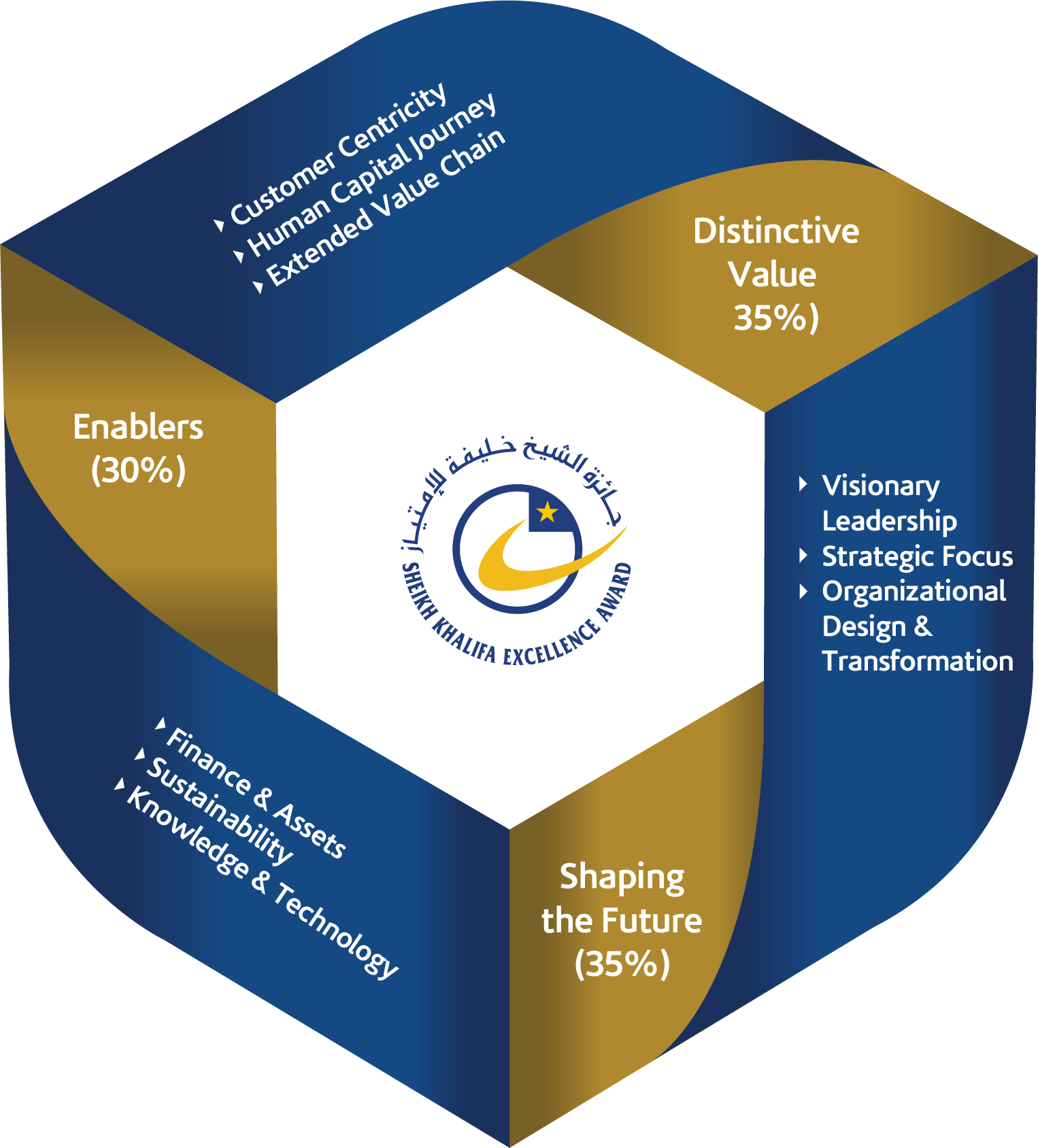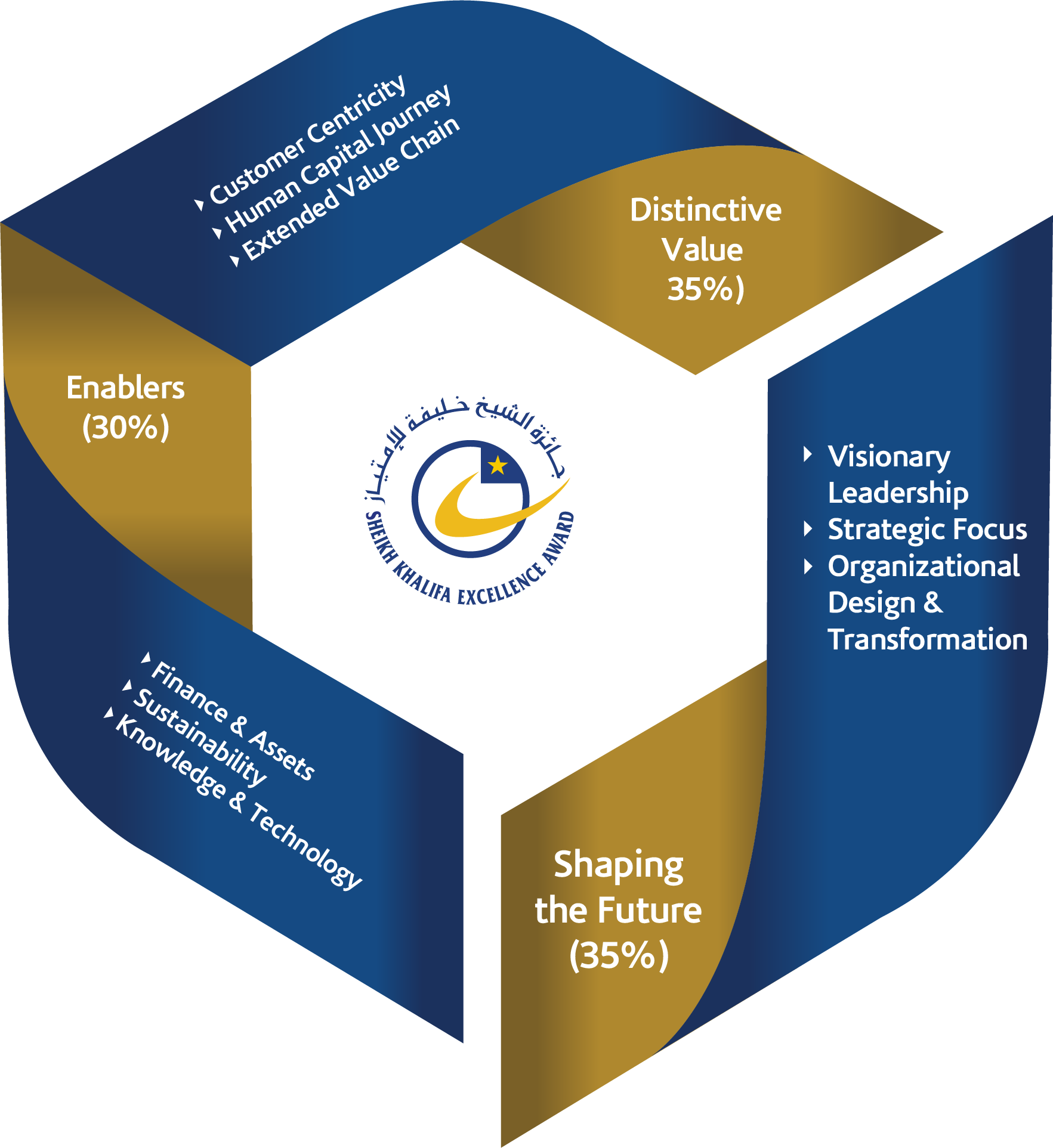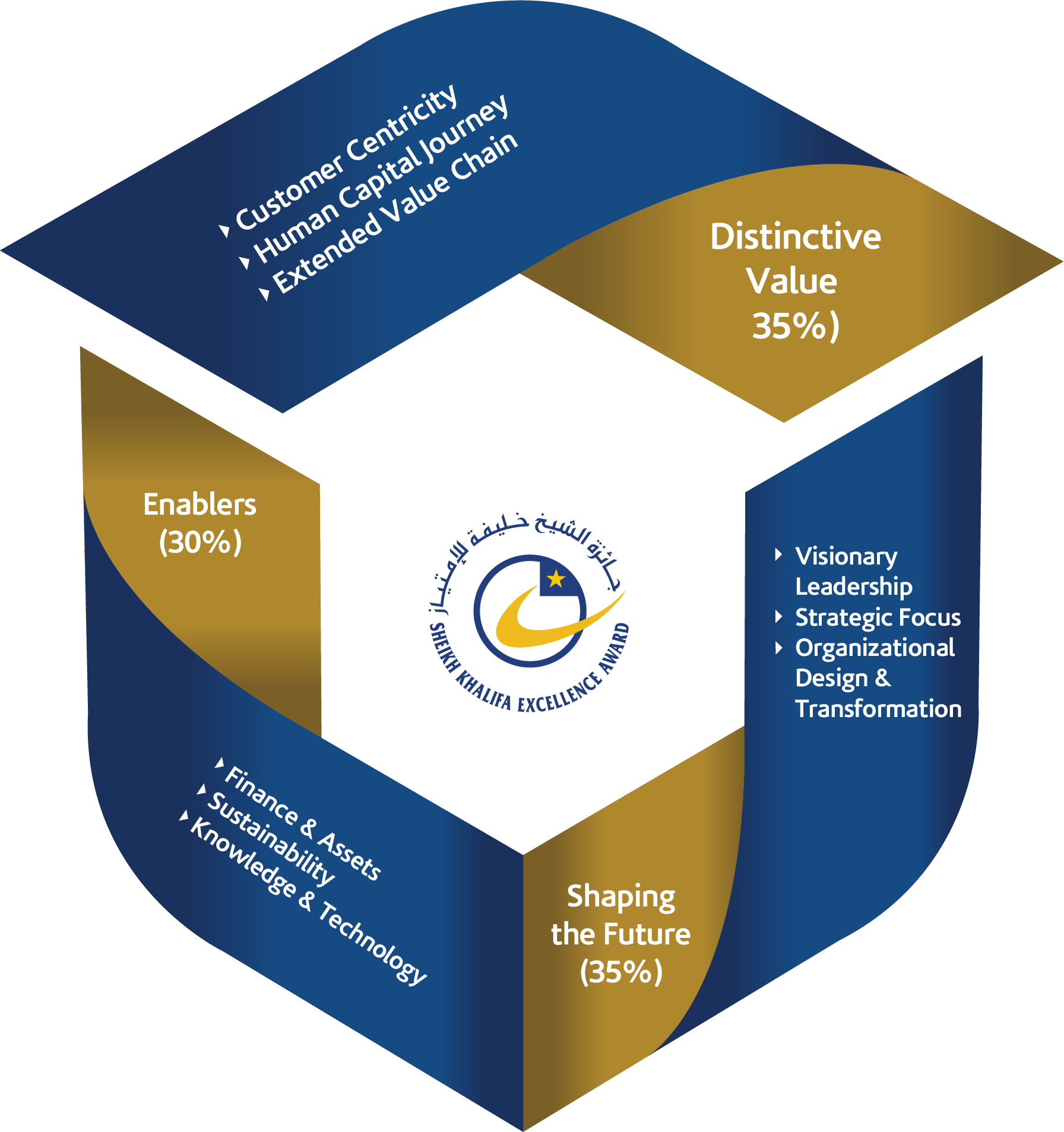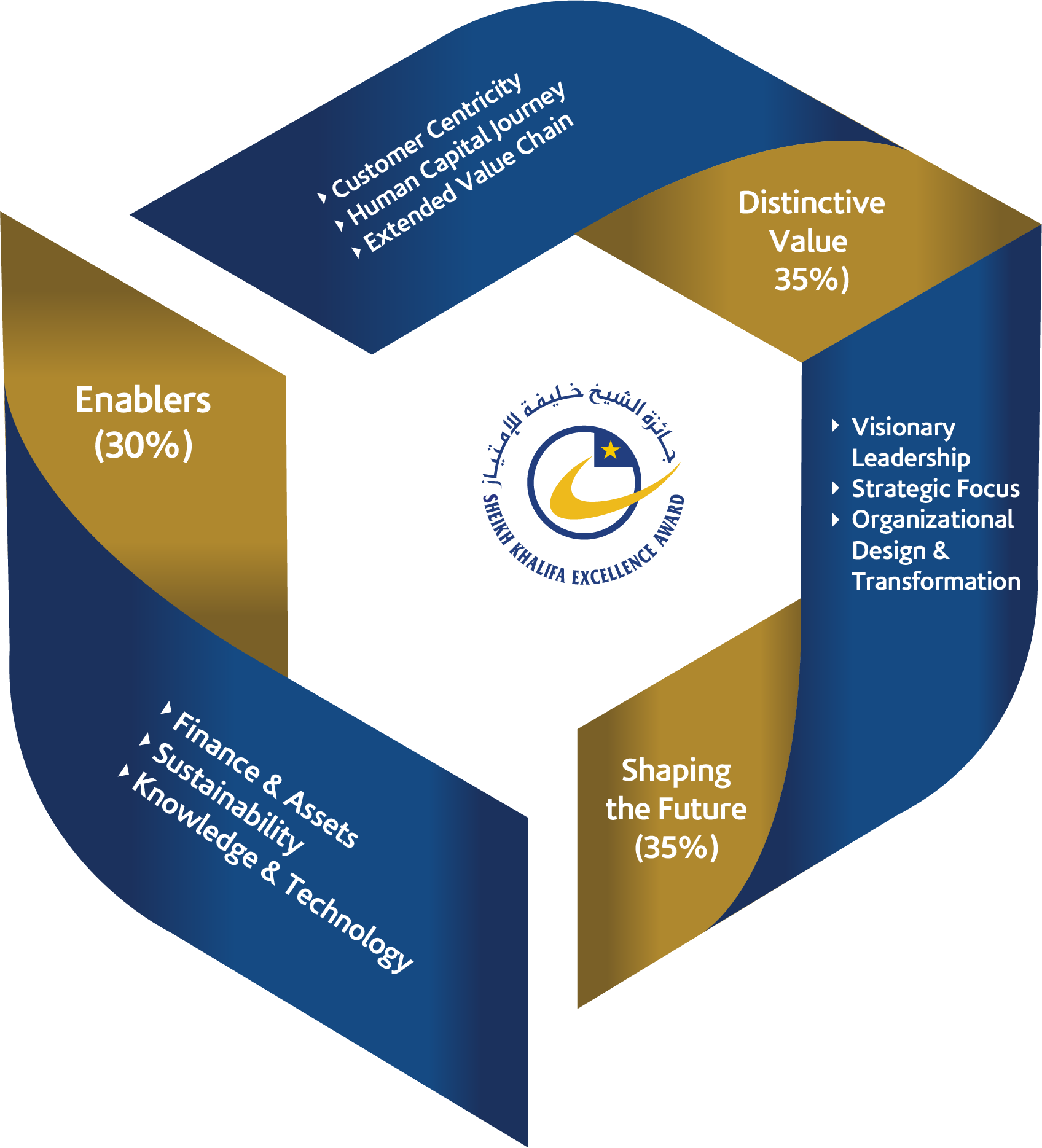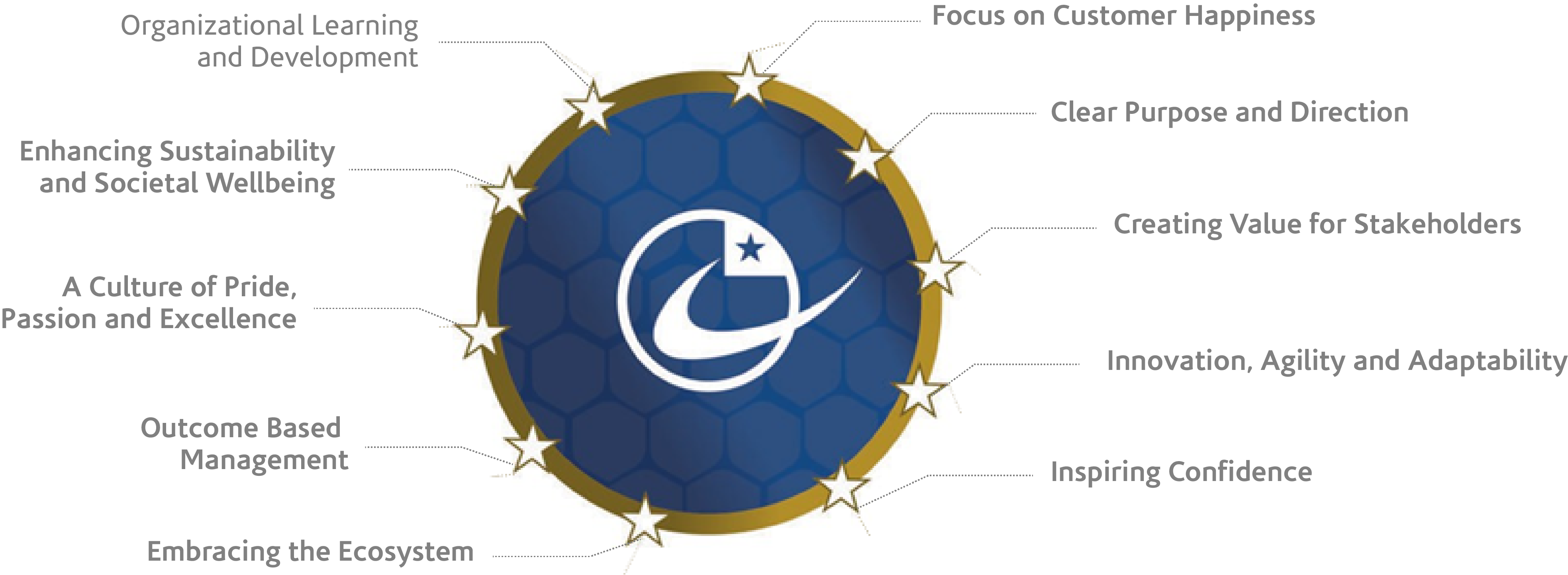
Excellent organisations have leaders who shape the future and make it happen, acting as role models for its values and ethics and inspiring trust at all times. They are flexible, enabling the organisation to anticipate and react in a timely manner to ensure the on-going success of the organisation.
1. Focus on Customer Happiness
A globally leading organization recognizes that customers are the prime reason for its existence and future success. Customer centricity involves understanding present and future customer desires for products and services, managing relationships for trust and loyalty, and addressing issues promptly. A customer-centric approach also involves differentiation through innovation, customized offerings, pricing strategies, and collaborations, all aimed at acquisition, retention, brand recognition, market share, and growth through continuous attention to customer feedback and marketplace changes.
2. Clear Purpose and Direction
Leaders within a globally leading organization define a clear purpose and ambitious vision, seamlessly integrated into the organizational structure and everything it does. This involves prioritizing resilience, adaptability, and the development of human capital, while fostering collaborative and inclusive work embodying strong organizational values and ethics. It entails creating a dynamic leadership approach that empowers people, develops their competencies and is committed to continuous improvement and innovation. Visionary Leadership drives the organization toward its ambitious goals while maintaining a leading position in the competitive landscape.
3. Creating Value for Stakeholders
A globally leading organization understands that actively engaging with stakeholders is fundamental to achieving sustained success. By understanding the diverse perspectives and interests of stakeholders such as customers, employees, investors, communities, and regulators, an organization can tailor its strategies and operations to create value for all. This engagement fosters trust, loyalty, and collaboration, enabling the organization to innovate, adapt, and grow sustainably. A leading organization that considers its stakeholders as partners in its journey can navigate challenges more effectively and seize opportunities for growth.
4. Innovation, Agility & Adaptability
A globally leading organization harnesses innovation, agility, and adaptability to ensure sustainable success. By proactively identifying threats and opportunities within the ecosystem, the organization can swiftly respond to risks whilst investing in new ventures to fortify its competitive edge. This forward-thinking approach leverages knowledge, fosters continuous learning, and nurtures creativity and is characterized by incessant experimentation, acceleration, and the implementation of novel ideas.
5. Inspiring Confidence
A globally leading organization establishes a robust governance structure that instills confidence in all stakeholders, emphasizing clear values centered on ethics, trust, transparency, and integrity whilst overseeing leadership and organizational effectiveness. It plays a crucial role in setting policies, monitoring performance, and holding leadership accountable, thereby safeguarding the organization’s sustainability.
6. Embracing the Ecosystem
A globally leading organization understands its ecosystem and gains valuable insights into the strengths and resources of diverse stakeholders and partners. This approach fosters the creation of collaborative, mutually beneficial relationships that facilitate the seamless delivery of customer-centric solutions for the benefit of all stakeholders.
7. Outcome Based Management
A globally leading organization leverages timely, accurate, and relevant information to understand its environment, track strategy progress, and support decision-making. This includes consolidating data to develop future scenarios, gain insights, and mitigate risks, ultimately guiding performance towards impactful outcomes for stakeholders. Through outcome-based management, the organization maximizes its return on investments by evaluating growth opportunities and optimizing the efficiency and effectiveness of its operations.
8. A Culture of Pride, Passion and Excellence
A globally leading organization values its people and recognizes that they are key to its ongoing success. All people within excellent organizations are engaged, enabled and empowered to actively contribute to the sustainable success of the organization. Valuing people involves commitment to their development and well-being, and tackling challenges like motivation, work-life balance, diversity, career progression, knowledge sharing, risk-taking for innovation, empowerment and accountability.
9. Enhancing Sustainability and Societal Wellbeing
A globally leading organization actively develops a culture that seeks to make a continuous positive contribution to the environment and society with public health, safety, and environmental protection embedded in the organization’s operations and product life cycles. This includes resource conservation, recycling, waste reduction, and proactive planning to anticipate and mitigate adverse impacts. Effective management of societal contributions requires appropriate measures and leadership accountability, ultimately positioning the organization as a role model in creating positive impacts on the environment and society.
10. Organizational Learning and Development
A globally leading organization recognizes that to reach the highest standards of excellence, it needs to be continuously learning and improving, staying abreast of the latest technology and business practices used by its peers. By understanding and adapting best practices, coupled with employees encouraged to develop and share their own knowledge and creative ideas, the organization can build stronger business processes and develop superior products and services that resonate with stakeholders.
